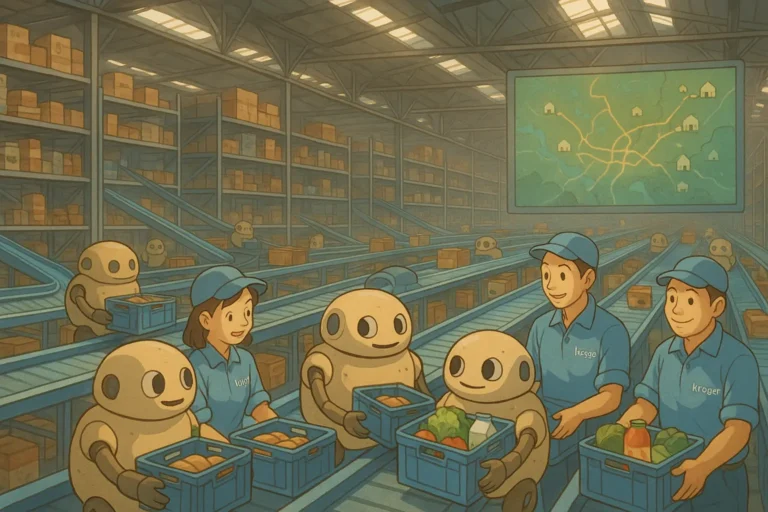
This is a story of Taiichi Ohno and how he became the father of Toyota production system.
The year was 1954, nine years after Germany had surrendered and ended the Second World War.
Many countries were reeling, but Japan was worse for wear. The country had taken a beating economically and physically, and businesses were struggling.
One of such businesses was Toyota.
A company founded only 13 years prior was facing extinction, especially in the face of stiff competition from its American counterparts.
It was in the midst of these struggles that a young engineer came on the scene.
His name? Taiichi Ohno. He would go on to be known as the father of the Toyota production system.
What was the challenge that Taiichi and Toyota faced?
Other than the threat of bankruptcy, Toyota had three key issues.
- The company was wasting resources
- Its supply chain couldn’t compete
- The product was subpar to their competition
What made the second problem a bit funny was that its competition wasn’t that great either.
It was a battle to the bottom, and Toyota was number one for all intents and purposes.
Taiichi Ohno had initially looked to the engineers at Ford, a leader in the automobile industry at the time.
Henry Ford had also invented the assembly line method of production.
His company was producing cars whether people needed them or not.
The more, the merrier seemed to be the motto.
In modern-day supply chain and inventory management, that method will go on to be commonly referred to as the push inventory model.
Ohno knew Toyota could not afford to do this, which had him going back to the drawing board and prayers.
There had to be a way out, and his counterparts in America weren’t the answer.
How Did Taiichi and the Toyota engineers overcome this situation?
If the American style only led to waste, overproduction, and product defects, Taiichi would go the opposite direction.
What could he lose right?
It was either innovate, take a risk, or the company dies.
He decided that he was going to cut down inventory and maximize what he had.
If mass production led to high numbers of product defects, why not scale down, produce a very strong product, and then reduce defects?
“Quality is always cheaper.”
This system would later go on to be called the Toyota Production System.
It was this decision that gave birth to the concept of lean production.
What are the principles that played a role in the Toyota Production system?
The TPS had five founding principles or pillars if you wish. They included:
Value stream mapping
The act outlines every step in the supply chain and producing a product, from the procurement of raw materials to the production and delivery of the finished product.
The objective is to distinguish between the steps that enhance the product’s value and those that do not.
JIT
The “just-in-time,” inventory model is the technique of creating goods or services only when needed and in the required quantity.
This method eliminates the requirement for extra inventory.
Jidoka
When a flaw is discovered, the production line is stopped. This stops problems from being transferred to the subsequent production stage.
Kaizen
The principle of continuous improvement. Probably the most important of the Toyota production system.
It follows the idea that no matter how successful a process is, there is always an opportunity for improvement.
Respect for people
This is the idea that a company’s most valuable resource is its workforce. They ought to be honoured and included in the process of improvement.
What was the result of the Toyota Production System?
Although Taiichi Ohno faced stiff resistance from his colleagues, he ultimately got them to his side, and they were able to make a huge success out of this single innovative idea.
The idea will not only go on to save Toyota but many supply chains across the world for years to come.
It is still saving many supply chains today.
However, at the time, the company
- Produced fewer but far superior automobiles
- Had fewer defects and wasteful resources
- Improved customer satisfaction catapulted the company’s sales, reviving the nearly failed business.
- Became a market leader in the global automobile industry
Lessons learned from Taiichi Ohno’s Toyota production system?
Modern supply chains can take a few lessons away from Taiichi and the Toyota production system.’
1. As much as businesses compete, supply chains compete as well.
2. Never be afraid of competition. It is a birthing place of great ideas and innovations.
3. Copying your competitor’s supply chain style may not always be in your best interest. Find what works for you.
4. The people in your supply chain matter. There is no supply chain without them.

Obinabo Tochukwu Tabansi is a supply chain digital writer (Content writer & Ghostwriter) helping professionals and business owners across Africa learn from real-world supply chain wins and setbacks and apply proven strategies to their own operations. He also crafts social content for logistics and supply chain companies, turning their solutions and insights into engaging posts that drive visibility and trust.








